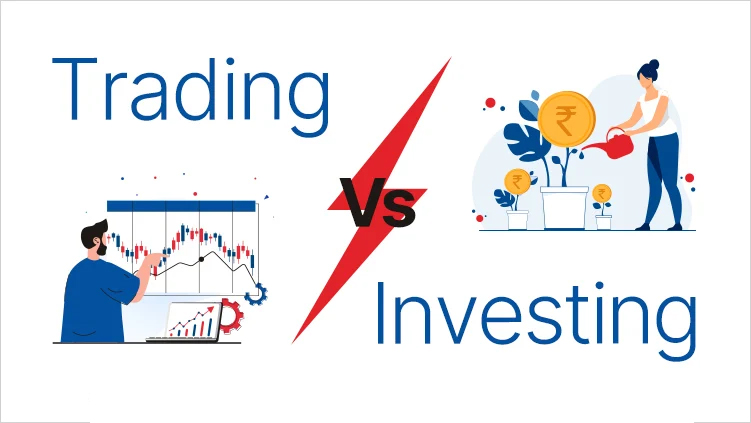People adopt a variety of strategies in the stock market to make money. People uses two different methods: Trading and Investing . Despite their apparent similarity, these two terms are distinct from one another and cannot be replaced. The main goals, personal preferences, risk tolerance, time horizon, and whether you are a cautious, moderate, or aggressive investor all vary across these two approaches.
Trading:
Buying stocks with the intention of selling them for a profit in the near future is known as trading. Technical analysis is used to predict short-term market swings. Trading operates on the “buy and sell” method. Since trading carries a greater risk than investing, this strategy is best suited for someone who is self-assured, disciplined, and capable of taking calculated risks. Intra-day trading is the term for trading in which the stock is held for a few hours or less.
Changes in the supply and demand for an asset are what lead to the market’s short-term swings. Technical analysis, which uses graphs, charts, and oscillators to assist predict short-term price swings, is the primary basis for trading. A seasoned trader with strong technical abilities may be able to profit quickly by taking advantage of market moves and crowd psychology. However, because there are transaction fees and short-term taxable gains, trading comes with higher costs.
Investing:
Investing involves purchasing stocks with the hope of generating secure returns over the long run. This process is influenced by the company’s fundamentals, such as its performance and the caliber of its management. It operates using the “buy and hold” tactic. Compared to trading, the risk associated with investing is relatively low. When compared to other strategies, it is believed that the long-term viewpoint reduces the likelihood of experiencing losses.
Investing has several advantages, such as less transaction costs, a decent dividend return from high-quality companies held for years, and the insignificance of short-term swings because it relies on long-term trends. Conversely, a stock may experience a decline as a result of market circumstances or performance stalls; in these cases, investors must accept the correction.
Conclusion
In simple terms, there are two separate stock market activities: trading and investing. Methodologies, risk variables, profit margins, time periods, participant behavior, etc. are some of the differences between them. A trader utilizes technical analysis with graphs, charts, and other tools in addition to risk management, whereas an investor bases his decisions on fundamental analysis. Investors, on the other hand, base their decisions on news, tips, rumors, market sentiments, and individual opinion. As stated above, you are able to make an informed choice about the kind of stock market return approach to choose depending on your objectives and level of ease.




